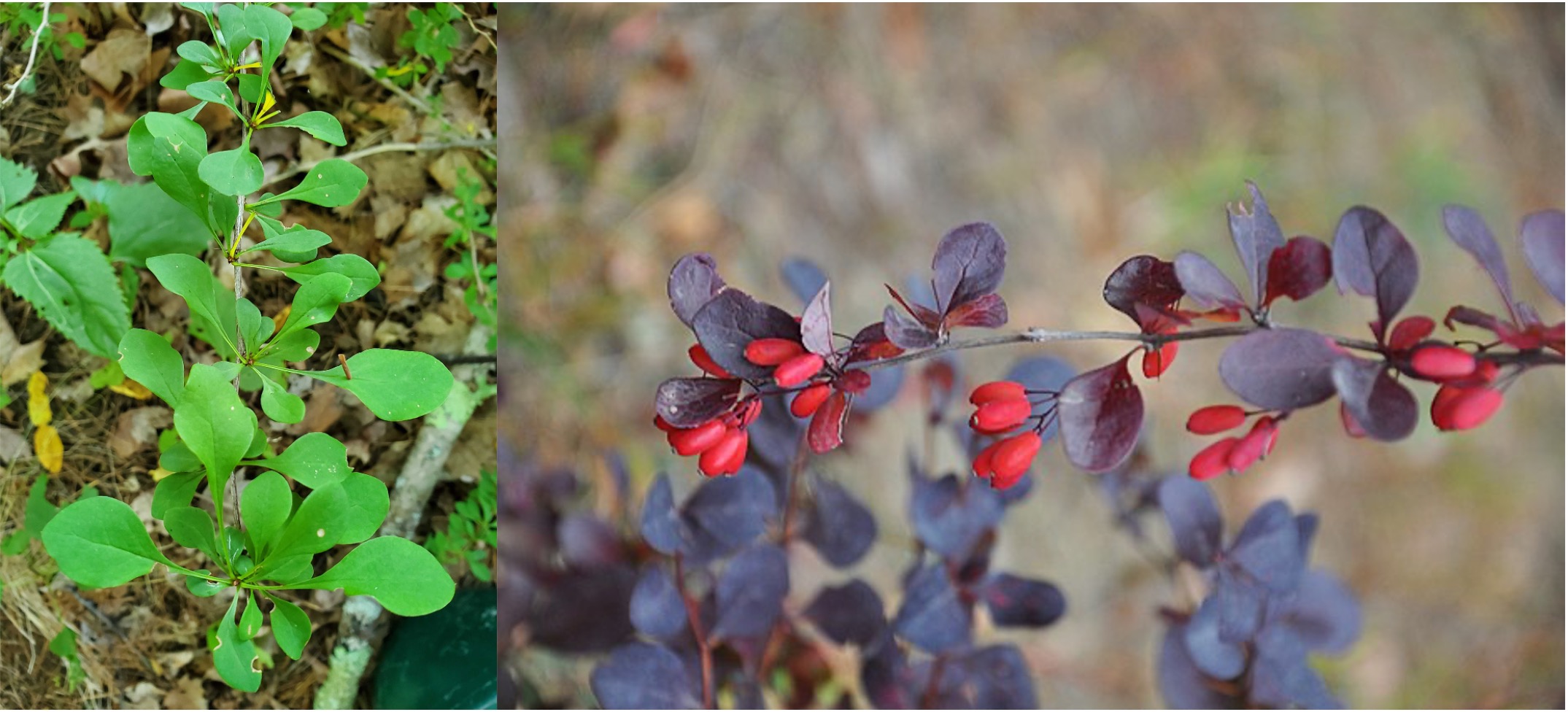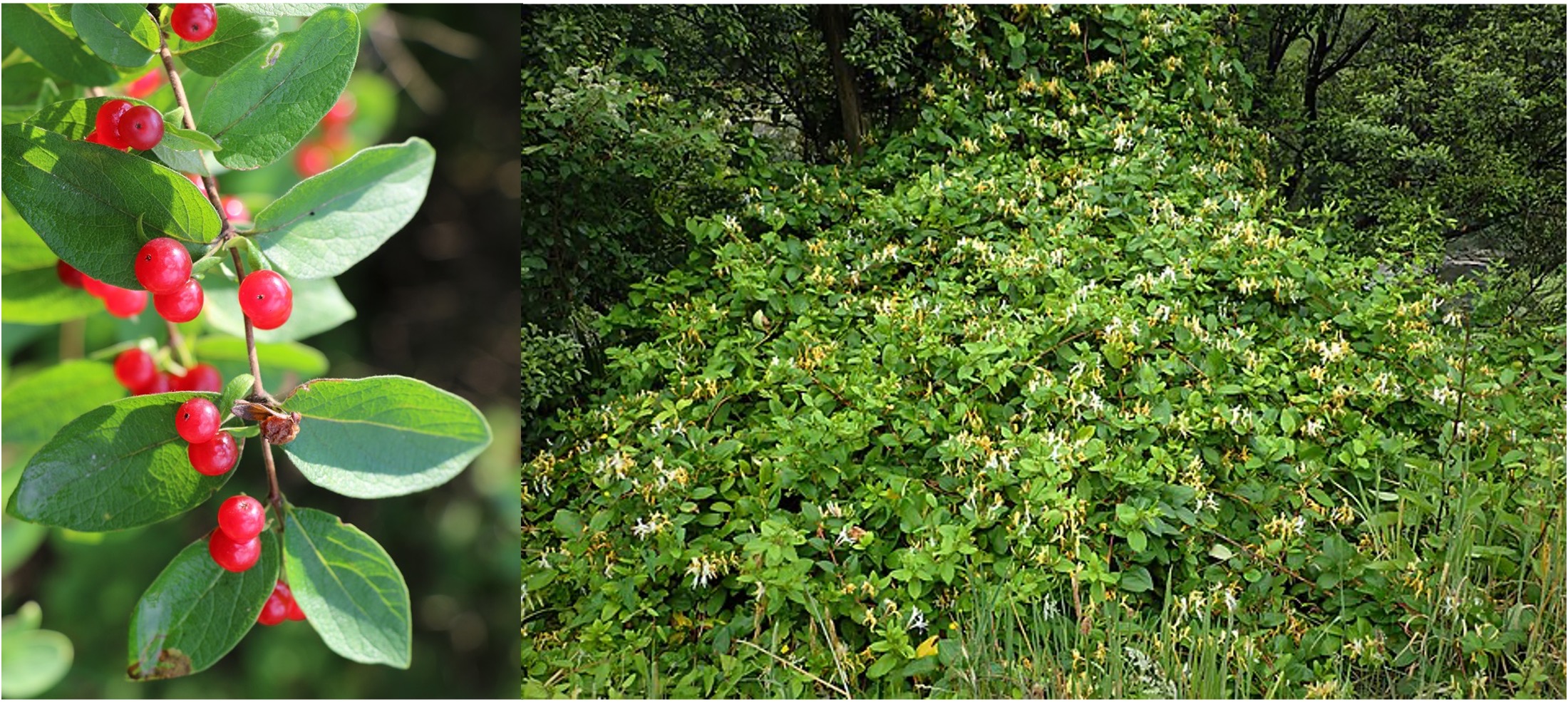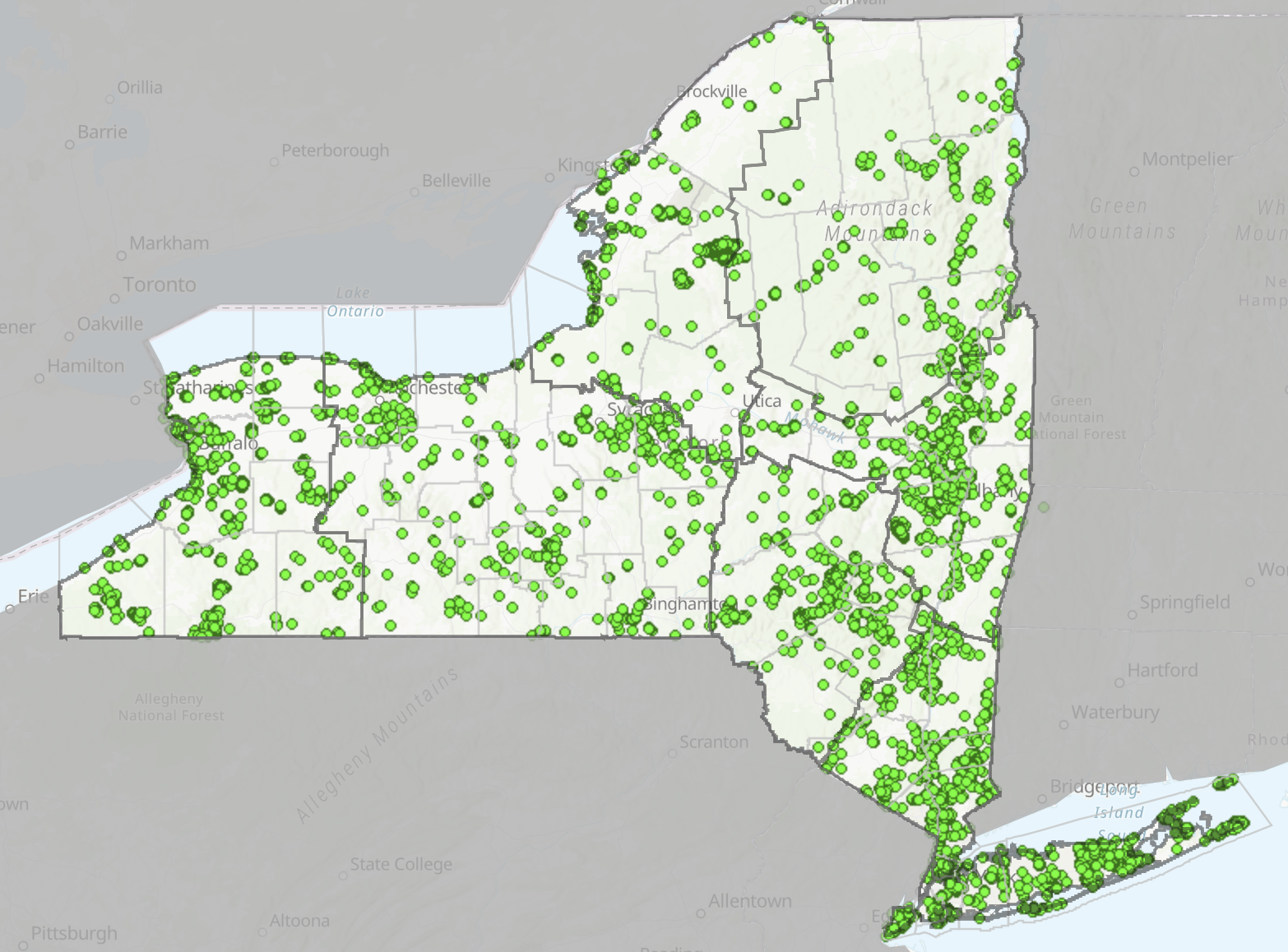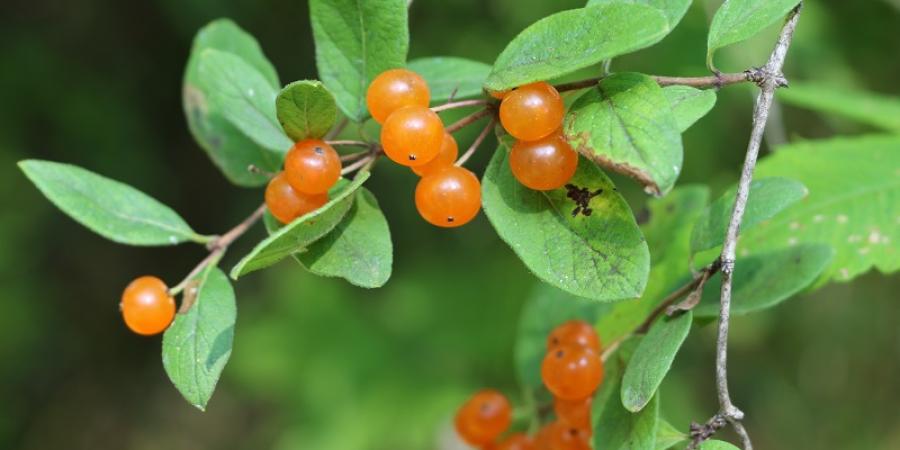The Adirondacks are an incredibly biodiverse and rich patch of nature in the United States. At 6 million acres, it is the largest protected forest in the state of New York and the whole country (apa.ny.gov). Many people, from state agencies to non-profits to community members are working to protect the native landscapes and species within the park. Despite these efforts, invasive species threaten to upend the local ecosystem. In particular, Japanese barberry and invasive bush honeysuckles threaten the forest understory and riparian forests across the park. In much of the region, these plants dominate the understory of our riparian forests. While out looking at riparian buffers on private lands this season, our science staff have been finding an awful lot of invasive shrubs in the understory during our Stream Wise surveys this season. As part of the Stream Wise program, we provide free property visits and assessments of the quality and quantity of riparian buffer on your river and streamside properties. We provide a detailed report and tools for managing your property, and if your property meets all of the Stream Wise criteria, you could win an award for being a good steward. We spend a great deal of time considering what species they replace and whether they have any value to wildlife or stream bank stability. The first question we asked ourselves was how these invasive species came to be in the Adirondacks.
 Different varieties of Japanese barberry. The red variety (right) is commonly used in landscaping. Photo from Wikimedia Commons.
Different varieties of Japanese barberry. The red variety (right) is commonly used in landscaping. Photo from Wikimedia Commons.
Japanese barberry first appeared in the United States in 1875. It was cultivated in a Boston arboretum before being sold as an ornamental alternative for common barberry in the early 1900’s. This was because common barberry, also not native to the United States but planted as a common hedge plant on farms, was found to carry a disease called black stem rust, which afflicted cereal crops on farms across the country (www.invasivespeciesinfo.gov). Despite being on the invasive species list, Japanese barberry is still sold today as a small shrub with a variety of colors (efotg.sc.egov.usda.gov).
In New York, Japanese barberry has been reported in all but four counties, although it is possible there is simply no data in those counties. It is mainly concentrated around the Hudson Valley, although it has been reported as far north as the Canadian border. In the Adirondacks, it is believed that this plant first invaded abandoned agricultural and logging lands in the park, and then spread across the open, barren fields with little resistance. The fruits are a favorite food for birds, deer, and small mammals, so the seeds are easily spread by animals. Given that much of the state was being heavily logged throughout this time, barberry was able to colonize disturbed lands very easily. In contrast, in areas that were reforested before the spread of the barberry, populations were far smaller (Degasperis and Motzkin, 2014). This highlights the important role that established native populations play in slowing the spread of invasive species.

Bush honeysuckle with berries and flowers. Photos from APIPP (left) and Wikimedia Commons (right).
The introduction of invasive bush honeysuckle is more complicated, as the term acts as an umbrella for four different species which are present in the park: Tatarian honeysuckle (Lonicera tatarica), Japanese honeysuckle (Lonicera japonica), Amur honeysuckle (Lonicera maackii), and Morrow’s (or bush) honeysuckle (Lonicera morrowii)(nyis.info). Each of these species were introduced at a different time and for a different purpose, with L. tatarica being introduced potentially as far back as the 1750’s as an ornamental plant. Meanwhile, L. maackii was not introduced in North America until the late 1800’s, when it was deliberately planted as a soil stabilizer along streambanks. It was also used in wildlife planning up until the 1980’s, and is still sold online today (nyis.info).
Since bush honeysuckles tend to put out leaves sooner in the season, and are capable of surviving into winter, they have more time to take root and prosper compared to native plants (www.fs.usda.gov). This makes honeysuckle a formidable invasive species to contend with. Despite the differences in reason and timeframe for introduction, all four have led to the same effect: loss in native understory biodiversity. Bush honeysuckles, like Japanese barberry, are spread through seed dispersal by birds and wildlife. This makes it easy for these species to escape cultivation when planted ornamentally and spread into the surrounding forests. Bush honeysuckles are found all across New York state, with a concentration again being in the Hudson Valley and Long Island. Considering L. japonica was first introduced here, these patterns make sense.

Map showing reported sightings of invasive bush honeysuckle across New York. Each dot represents a reported sighting. A lack of data on the map should not be considered an absence of honeysuckle in that area, but that it has not yet been reported, and could still potentially be present. Note that because bush honeysuckles are so common, they are likely underreported. Credit: New York Invasive Species Database.
Support our work to stop the spread of invasive species. Give with confidence today!
Invasive species capitalize on environments with low native biodiversity and will fill the niches left behind by these openings. As a result, invasives will often appear in areas impacted by natural disasters or human disturbance, such as clear-cut forests or abandoned farms. Once established, invasives keep native biodiversity low, which can be seen all across the park. Barberry and honeysuckle in particular affect understory plants like shrubs and bushes, as they leaf out earlier and shade out smaller native plants. At large sizes, they can even shade out saplings and young trees. Severe infestations can also be a breeding ground for ticks (extension.psu.edu) when compared to native species.
Invasive species are very difficult to manage once they have become established. Preventing their introduction and spread is the best method in keeping invasives out of an area. While Japanese barberry and bush honeysuckles are both well-established across the Adirondacks, it is still possible to prevent their local spread. Protecting native biodiversity makes it harder for invasive species to spread and become established. In areas that have been recently disturbed, planting native species can inhibit the introduction of invasives into these areas. But what species naturally occurred before these invasive species took over? In many areas still untouched by barberry and honeysuckle, we see lots of young hardwoods and pines in the understory, such as Eastern hemlock, American beech, white ash, black ash, balsam, and basswood. For young native understory shrubs, things that would have lived where barberry lives could include species like New Jersey tea, winterberry, and ninebark (www.fs.usda.gov). In the case of honeysuckles, this includes trumpet honeysuckle, spicebush, highbush blueberry, and arrow woods (www.fs.usda.gov). By encouraging the growth of these native plants, we can establish native strongholds that will be much harder for invasive species to invade.
In the next installment of this two-part blog series, our river steward, Krista, will discuss how to manage these invasive shrubs if you choose to reclaim the understory on your property. If you are interested in learning more, or if you have a streamside property you'd like assessed through our Stream Wise program, please contact us.
Story by Matthew Ravascheire, 2023 Fellow at AsRA from Colgate University’s Upstate Institute.
Sign-up for our e-newsletter to get weekly updates on the latest stories from the Ausable River Association.


